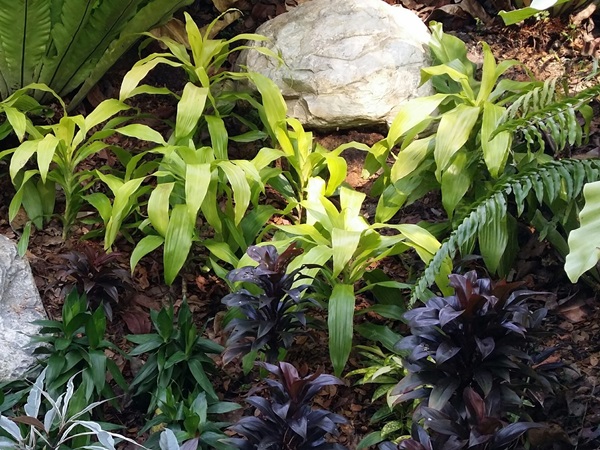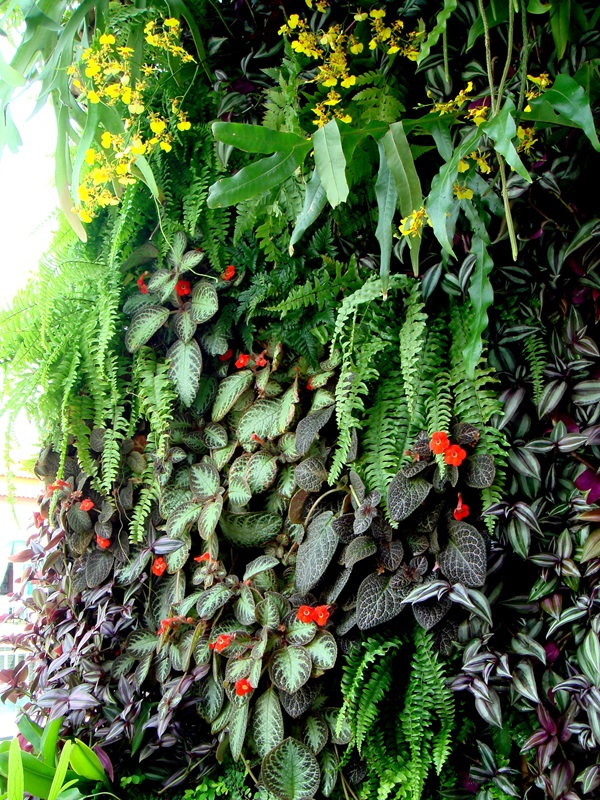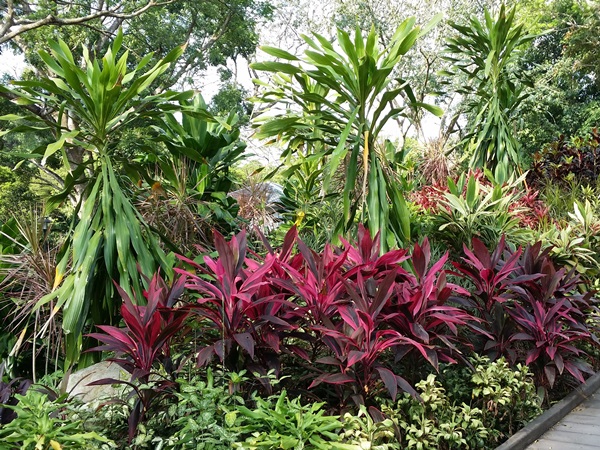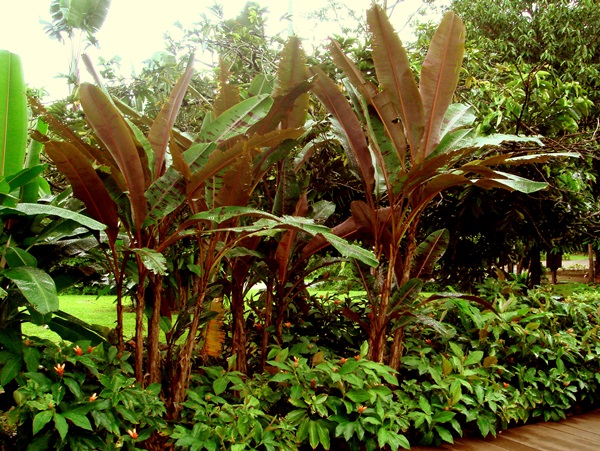Play With Contrasts To Beautify Your Garden
Have you explored the new Foliage Garden in the Singapore Botanic Gardens? Ever wondered how you can replicate these interesting displays in your home?
Here, we share how you can use contrast to create a visually striking garden. Good garden designs often feature contrasts in colour, texture, size and form. Contrast is used to play up differences and create visual interest. However, like other garden design principles, moderation is key as too much contrast can be visually unsettling and overwhelming.
Below are some simple tips on how you can use plants to create contrast in your garden.Before you start placing a variety of plants in your garden, do ensure that you take into account their growing conditions.. Plants sharing a plot should be suited to the same type of soil, and require a similar amount of sunlight and water.
Tip 1: Contrast using colour

In this example, the shapes and textures in this plot are relatively similar, but the yellow leaves of the ‘Lime Light’ (Dracaena fragrans) with the purple-hued Hawaiian Bonsai (Cordyline fruticosa)create visual interest.
Contrast can be achieved by using complementary colours, which are hues located on the opposite side of each other on the colour wheel. When used together, the colours are enhanced and appear brighter. You can combinations like yellow with purple, or red with green.
Tip 2: Contrast using texture

Here, a complex contrast of textures is achieved by using plants with different leaf shapes and arrangements. The Flame Violet (Episcia) plants with their rounded leaves are arranged like a rosette, which is made more striking by the cascading fronds of the Boston Fern (Nephrolepis exalata).
Texture generally refers to the size and shape of a plant’s leaves. To achieve contrast in foliage texture, use a combination of plants that have large or broad leaves (coarse foliage) with those that have small or narrow leaves (fine foliage). The contrast in textures helps to highlight the beautiful characteristics of each plant. Coarse foliage tends to stand out, while fine foliage can be used to soften a landscape.
Tip 3: Contrast using size

Contrast in size can be easily achieved by using plants of different heights. In this example where plants with relatively similar leaf shapes are displayed, the taller Dracaena steudneri clearly stands out from the mid- and low-tiered plantings, adding height and variation to the landscape.
Size refers to the overall height and spread of a plant. Large plants in the landscape are usually trees and taller shrubs. Most landscaping shrubs can be regarded as medium-sized plants. Low-growing plants would refer to groundcover plants.
When working with different sizes , remember to keep the plants proportionate to the neighbouring plants and nearby structures nearby. You should also take into account the size of these plants when they mature, and make the necessary space provisions. For visual interest, interweave groups of plants of similar height to form a serpentine pattern. Unless you are creating a formal garden, it is advisable to avoid creating obvious and rigid layers of low, medium and large plants for a more visually appealing landscape.
Tip 4: Contrast using plant form

Here is a simple combination of two plant forms in a landscape that is made up of tall, upright Blood Banana plants (Musa acuminata ssp. zebrina) interspersed with the shorter Spiral Gingers (Costus).
Form is the shape of a plant. There are several kinds of tree shapes, such as columnar, round, weeping or pyramidal. Shrubs come in a wider variety of forms such as irregular, rounded, mounding, arching, cascading, spiky and upright. Groundcover plants, which are low-growing, can be described as having forms that clump, sprawl, spread and more.
Combining plants with different forms creates a delightful visual contrast. Plants with upright or columnar growth habits can be used to punctuate a landscape that is largely made up of shrubs and groundcover. They are attention-grabbing and help to add height to a landscape. Plants with low-growing forms bring down the viewer’s gaze, and are used to add width to a landscape. Now that we have explained the basics, the rest is up to you. Go experiment in your garden today!
The Foliage Garden is a themed garden in Singapore Botanic Gardens. Read more about the garden.
Photos and text by Dr Wilson Wong





Have views or comments on this article? Let us know via this form. If you would like to give us feedback on any other areas relating to our parks and gardens, please submit via https://www.nparks.gov.sg/feedback